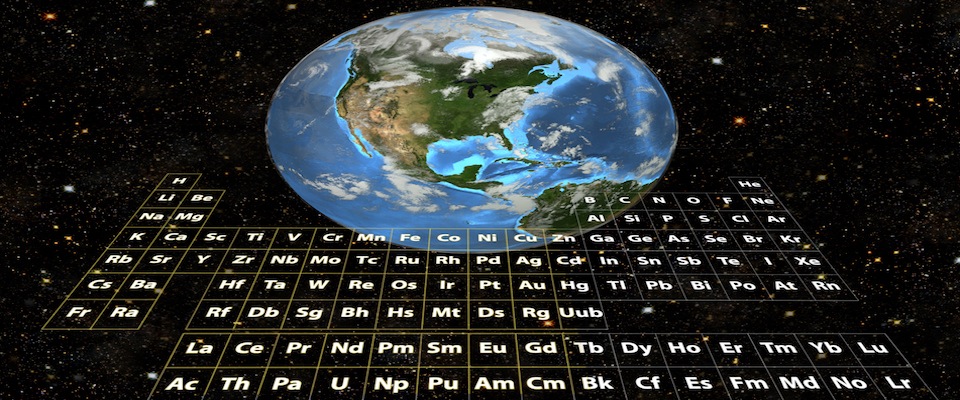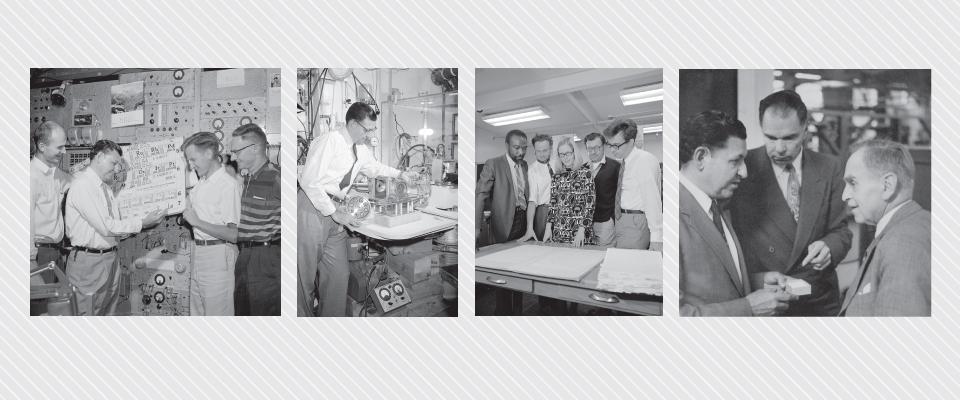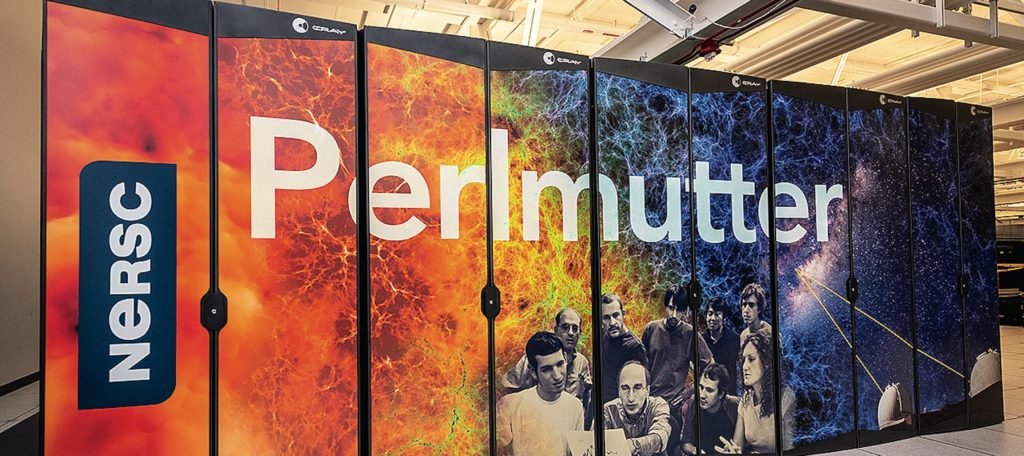The recent inclusion of four new elements to the periodic table was cause for the clinking of champagne glasses at places where people cook up such exotic stuff, including Berkeley. One reason is that credit for some of these latest discoveries goes to Lawrence Livermore National Laboratory, which was itself birthed out of UC Berkeley.
But in a broader sense, UC Berkeley and Lawrence Berkeley National Laboratory (now also known as Berkeley Lab) have been the point of the spear for the synthesis of transuranic elements (those with atomic numbers greater than 92) since such research began.
Indeed, productive work in the field of was only made possible by the cyclotron, an invention of the university’s own Ernest O. Lawrence. The device smashes various highly charged particles into atomic nuclei, fusing the bits and pieces into superheavy elements. Cal researchers created the first such synthesized elements, neptunium and plutonium (atomic numbers 93 and 94).
The spoor of the researchers who labored at Cal and Lawrence Berkeley National Laboratory is much in evidence on the periodic table. It is truly elemental: There’s berkelium, and californium, and lawrencium and seaborgium (named after Cal chemistry professor and nobelist Glenn T. Seaborg, who led the team that isolated plutonium.) As noted in a 2014 California article, researchers at Berkeley and Lawrence Berkeley Lab could claim 16 elements—fully 14 percent of the then extant periodic table—even before the recent announcement by the International Union of Pure and Applied Chemistry on the discovery of elements 113, 115, 117 and 118,
And it’s likely that Cal’s luster will only increase with the new additions to the table, if only obliquely. So far, these newcomers have only been given placeholder names: element 113 is temporarily known as ununtrium, 115 as ununpentium, 117 as ununseptium and 118 ununoctium. Final names will be appended once the chemistry union works out the details (and the politics).
Lawrence Livermore National Laboratory is being given full credit for discovering element 118, and partial credit (with the Joint Institute for Nuclear Research in Russia and the Oak Ridge National Laboratory in Tennessee) for elements 115 and 117.
Though the Livermore Lab no longer has a direct association to the university, it was founded in 1952 as the University of California Radiation Laboratory at Livermore. It assumed its current name in 1971. In 2007, the university transferred the lab’s sole management to a partnership that includes Cal, Texas A&M, Bechtel, Babcock & Wilcox (a North Carolina power generation company), the Battelle Memorial Institute (a technological development charitable trust in Ohio) and San Francisco-Based URS, an engineering and design firm.
Despite the Livermore Lab’s formal separation from Cal and Berkeley Lab, the historic bonds conjoining the three institutions remain strong.
Speaking to Berkeley’s place in the annals of element hunting, Barbara Jacak—director of the Nuclear Science Division at Berkeley Lab, the faculty senior scientist at Berkeley Lab and the discoverer of quark gluon plasma (a variant of matter thought to exist at extremely high densities and temperatures)—says the university’s preeminence is due to a happy convergence.
“It was a combination of the fact that this is where the cyclotron was invented, and we had the best and the brightest people,” she says. “Back when it all started, Berkeley was really the only place where you could do this kind of work. Now other labs are involved in super heavy element research, of course, but Berkeley and LBNL have been able to maintain their momentum.”
So quo vadis, element hunters? Researchers will keep on keeping on, forging ever upward (if that’s the proper direction) on the periodic table, but things are likely to get tougher.
Generally speaking, elements with atomic numbers higher than 92 tend toward increasing instability—in other words, radioactivity. Many are so unstable that they degrade too quickly to study in any real-time sense. Scientists typically confirm their existence by analyzing decay products. Stability is calculated by determining each element’s half-life: the time it takes for one-half of a given sample of the heaviest isotope of an element to decay into other particles. Element 118, for example, has a half-life of 890 microseconds. So as physicists and chemists crawl up the periodic table, they literally have less stuff to work with; in the best of circumstances, particle beams typically produce a few atoms of super heavy elements, not ingots.
There’s perhaps some good news down the line: A widely-held predication in nuclear physicists holds that an “island of stability” exists somewhere up the table, an island stocked with elements with half-lives that might be measured in minutes, days, years, decades, or longer. But it’s unlikely we’ll establish a beachhead on that fabled isle anytime soon.
“We participated with the GSI Helmhotz Center for Heavy Ion Research (in Germany) in searches for elements 119 and 120,” says Ken Gregorich, a senior staff scientist with the Heavy Element Research Center at LBNL. “Those experiments ran for weeks, but nothing was observed, and with our present equipment, it’s unlikely we’ll have any success. Duke University is planning a super heavy element factory that will have particle beams with higher intensities, so that may make it possible. But as we move beyond element 120, we’ll probably have to deal with elements with much shorter half-lives, so that’s going to make detection very difficult if not impossible, at least with current technology.”
Still, that doesn’t mean scientists will have to sit around twiddling their thumbs while they wait for machines that will transport them beyond element 118.
“We’re focusing on analyzing the super heavy elements we’ve already identified,” says Gregorich. “For example, we’re looking at gamma ray (radiation) in relation to beta decay (a radioactive process in which a proton is transformed into a neutron, or vice versa, inside an atomic nucleus). That will help us determine the actual nuclear structure of a super heavy atom in greater detail.”





















